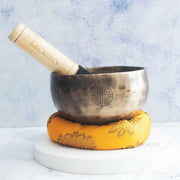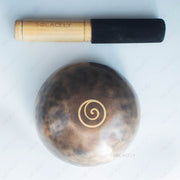This one also more beautiful than the picture
Hi there, thank you so much for your lovely review! We're so happy to hear that you think our Turquoise Sterling Silver Oval Ring is even more beautiful in person. We strive to provide high-quality products that exceed our customers' expectations. Thank you for your support!
Its a piece of art. Worth the price, which is most reasonable.
Thank you for your kind words! We are so glad to hear that you are enjoying your Tibetan Singing Bowl Moon. We take pride in offering high-quality products at reasonable prices. Thank you for choosing our product as a piece of art. Happy meditating!
More beautiful than in the picture
Thank you so much for your lovely review! We are thrilled to hear that you are pleased with the craftsmanship of our Faceted Pyrite Anklet and that it exceeded your expectations. We hope you enjoy wearing it and thank you for choosing our product.
Thank you for the support i received the product I'm very surprised by the support you gave during delivery this is very rare and genuine. Thank you again for the support you gave, You are doing a great job and I love this product
Thank you so much for your kind words! We are thrilled to hear that you had a positive experience with our delivery and customer service. We truly value your support and are so happy that you love the Rainbow Moonstone Bracelet. Thank you again for choosing our product. Have a wonderful day!
It is a beautiful product and is exactly as advertised. I have been wearing the stacked bracelet consistently and have been feeling that my throat chakra is more open. My throat is very important both for my work and personal interests since I am a speaker and a singer. I also wished to improve communication, especially in my personal relationships. It seems to be working. Thank you!
Thank you so much for your wonderful review! We are thrilled to hear that our Throat Chakra Stackable Bracelet Set has been helpful in opening up your throat chakra and improving your communication. We truly value your feedback and are grateful to be a part of your journey. Keep Shining,
And thank you for choosing our product!
Love this Virgo bracelet! It’s dainty, well-made, and perfect for everyday wear. The zodiac charm is a cute touch — subtle but meaningful. Great quality and fast shipping! Hoping wear it brings a lot of positivity.
Thank you for your lovely review
We're so glad to hear that you love your Virgo bracelet and that it arrived quickly.
We hope it continues to bring you positivity.
Thank you for choosing our product.
































